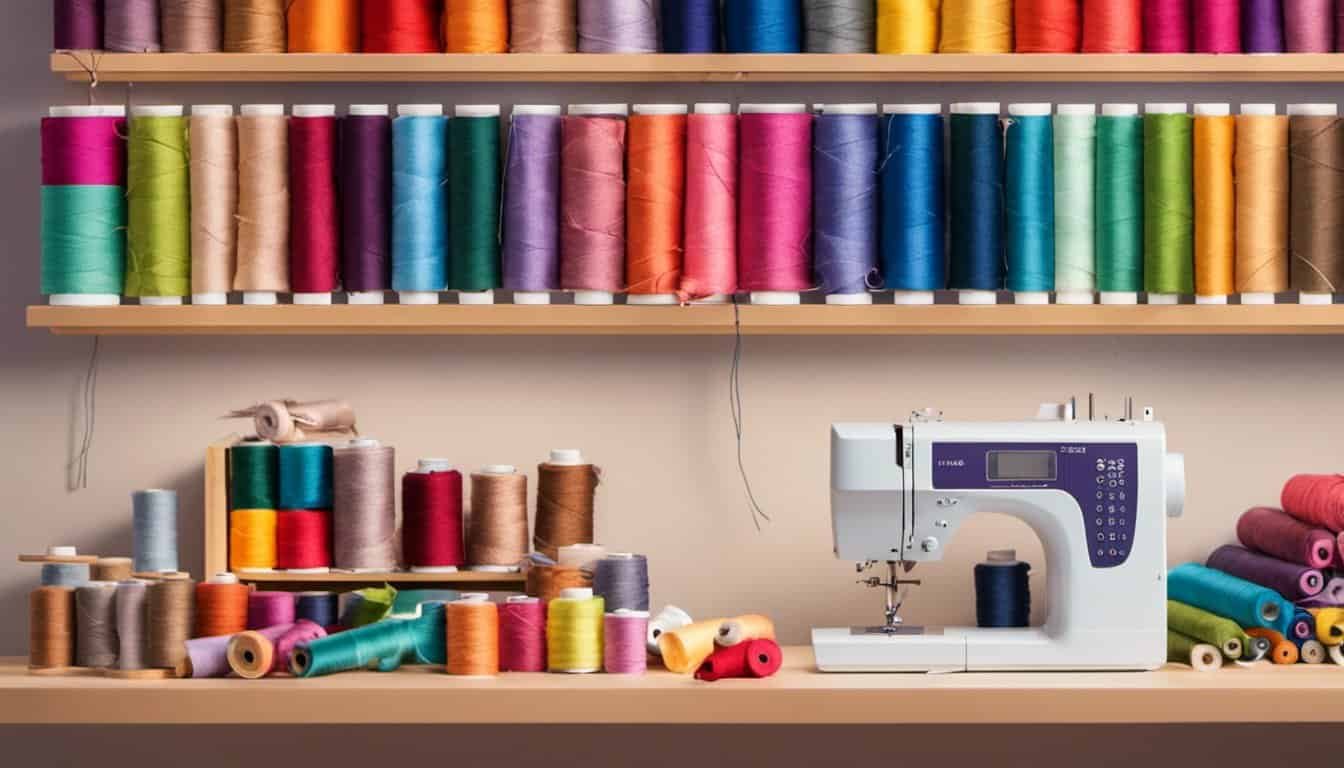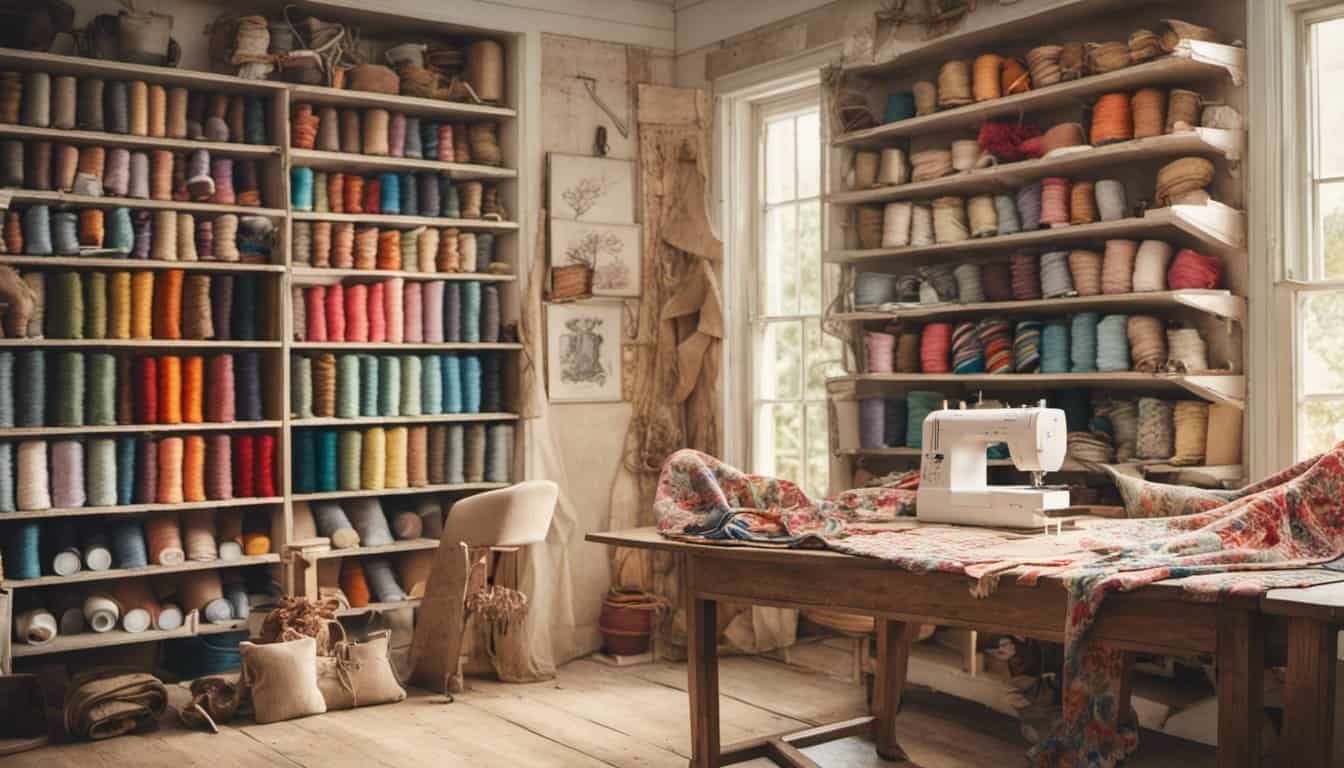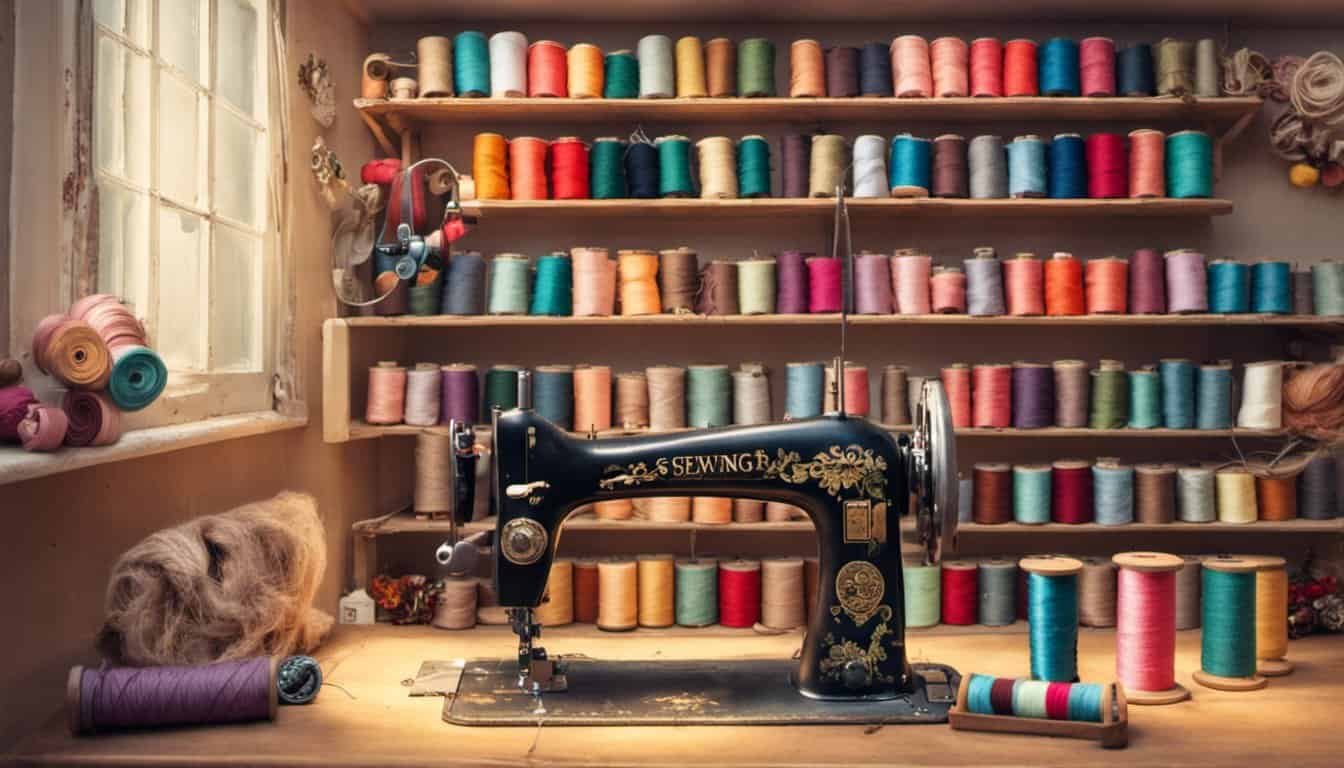If you’ve ever wondered what happens if you accidentally prick yourself with a sewing needle, you’re not alone. It’s a common concern, especially for those who enjoy sewing or have young children around. In this article, we’ll explore what happens when a sewing needle pierces the skin, the potential risks involved, and what you should do if you find yourself in this situation. So, let’s dive in and shed some light on this needle-related mishap.
Have you ever experienced the panic of dropping a sewing needle on the floor and not being able to find it? It’s a heart-stopping moment, especially if you have pets or small children around. In this article, we’ll discuss what happens if you accidentally step on a sewing needle and the potential complications that can arise from such an incident. So, let’s unravel this needle-in-foot conundrum and find out what you should do if you find yourself in this prickly situation.
Sewing needles are a common tool in many households, but accidents can happen. If you’ve ever wondered what happens if a sewing needle gets stuck in your finger, you’re in the right place. In this article, we’ll explore the potential consequences of a needle getting lodged in your skin, the steps you should take to remove it safely, and when it might be necessary to seek medical attention. So, let’s thread our way through this needle-stuck-in-finger scenario and find out how to handle it like a pro.
The Anatomy of a Sewing Needle
Sewing needles are small, yet mighty tools that play a crucial role in the world of sewing, embroidery, knitting, and crafts in general. Understanding the anatomy of a sewing needle can help you appreciate its design, functionality, and why it’s important to handle it with care.
- Eye: This is the hole at the top of the needle through which the thread passes. Needle eyes come in different sizes, depending on the thickness of the thread you intend to use. Thicker threads require larger needle eyes for smoother threading.
- Shaft: The shaft of the needle is the long, slender part that penetrates through the fabric. It is essential to choose the right needle size and type for your project. Thicker fabrics like denim or upholstery require needles with a larger diameter to avoid breaking or bending.
- Point: The point of the needle is the sharp tip that pierces through the fabric. Needle points come in various shapes, including sharp points for woven fabrics, ballpoints for knits, and embroidery needles for delicate work. Using the wrong needle point can result in skipped stitches or damage to the fabric.
- Groove: Not all sewing needles have grooves, but some needles, especially those used for embroidery or metallic threads, have a groove on either side of the shaft. These grooves help reduce friction between the thread and the needle, preventing it from breaking or shredding.
- Throat: The throat of the sewing needle refers to the area between the point and the shaft. Its purpose is to guide the thread smoothly into the fabric. Needles with a larger throat opening are ideal for heavyweight or multi-layered fabrics.
Remember, when working with sewing needles, always prioritize safety. Accidental pricks or getting a needle stuck in your finger can lead to complications. Make sure to handle needles with caution, dispose of them properly, and keep them out of reach of children and pets.
Now that you understand the anatomy of a sewing needle, you have a deeper appreciation for this small but mighty tool. Whether you’re sewing a button, embroidering a beautiful design, or working on a knitting project, let the needle be your trusted companion as you create something wonderful.
Common Accidents with Sewing Needles
When it comes to sewing, embroidery, knitting, and other crafts, accidents can happen. One of the most common accidents is pricking yourself with a sewing needle. It may seem like a small thing, but it can lead to some complications if not taken care of properly. Let’s explore some common accidents and what you should do if they happen.
Accidentally Pricking Yourself
We’ve all been there – reaching for a needle and then suddenly, ouch! You’ve pricked yourself. It’s a common accident that can happen when you’re not paying attention or if you’re working in a rush. While it may not seem serious, it’s important to take proper care of it. Here’s what you should do:
- Clean the area with soap and warm water to prevent infection.
- Apply an antiseptic ointment to keep the wound clean.
- Cover it with a bandage or sterile dressing to protect it while it heals.
Stepping on a Sewing Needle
Another common accident is stepping on a sewing needle. It can easily happen if you drop a needle on the floor and don’t notice it. If you find yourself in this situation, here’s what you should do:
- Carefully remove the needle from your foot with a pair of tweezers.
- Clean the area with soap and warm water.
- Apply a mild antiseptic solution to prevent infection.
- Cover the wound with a bandage until it heals.
Getting a Sewing Needle Stuck in Your Finger
Although less common, getting a sewing needle stuck in your finger can happen. This usually occurs when you’re not holding the needle properly, and it slips and gets stuck in your finger. If this happens to you, don’t panic. Here’s what you should do:
- Don’t try to remove the needle yourself. Seek medical attention immediately as the needle may need to be removed by a medical professional.
- Keep the affected finger elevated to reduce the risk of further injury.
- Apply gentle pressure around the needle to minimize bleeding.
The Dangers of Sewing Needle Ingestion
Accidentally swallowing a sewing needle can be a frightening experience. Although it may seem unlikely, it’s important to be aware of the potential dangers and take immediate action if it happens. Here’s what you need to know about sewing needle ingestion, in case it ever happens to you.
1. Seek medical attention: If you accidentally swallow a sewing needle, it’s crucial to seek medical help right away. Don’t try to remove the needle by inducing vomiting or by eating or drinking anything, as this can lead to further complications.
2. Potential complications: Sewing needles can cause serious harm when swallowed. They can puncture the esophagus, stomach, or intestines, leading to internal bleeding, infection, or even perforation. In some cases, surgery may be required to remove the needle and repair any damage it has caused.
3. X-ray examination: To determine the location of the needle and assess the potential damage, your doctor may recommend an X-ray examination. This will help them decide on the best course of action to remove the needle safely.

4. Removal methods: Depending on the size and location of the needle, different methods may be used to remove it. In some cases, an endoscope may be passed through the mouth into the stomach or intestines to retrieve the needle. In more severe cases, surgery may be necessary.
5. Prevention is key: The best way to avoid the risks associated with sewing needle ingestion is to prevent it from happening in the first place. Always be mindful of your workspace, keep needles securely stored, and avoid holding needles in your mouth while working on your crafts.
What to Do If You Accidentally Swallow a Sewing Needle
Accidents happen, and there may come a time when you accidentally swallow a sewing needle. While this can be a scary situation, it’s important to stay calm and take the necessary steps to ensure your safety. Here’s what you should do if you find yourself in this unfortunate predicament:
- Do not panic: Panicking will only make the situation worse. Take a deep breath and try to remain calm.
- Seek medical assistance: Swallowing a sewing needle can potentially cause serious internal injuries, so it’s crucial to seek medical help immediately. Call your local emergency services or go to the nearest emergency room.
- Avoid eating or drinking: While waiting for medical assistance, refrain from eating or drinking anything. This will help prevent further complications and reduce the risk of the needle causing damage to your digestive system.
- Do not induce vomiting: It may be tempting to try and force yourself to vomit in order to expel the needle, but this can lead to additional injuries. Let medical professionals determine the best course of action to safely remove the needle.
- Cooperate with medical professionals: Once at the hospital, the medical team will assess your condition and may order imaging tests, such as an X-ray or a CT scan, to locate the needle. They will then devise a plan to safely remove it.
- Follow post-removal instructions: After the needle is successfully removed, the medical professionals will provide you with instructions on how to care for your body as it recovers from the incident. It’s essential to follow these instructions and attend any follow-up appointments to ensure proper healing.
Accidentally swallowing a sewing needle is a serious situation that requires immediate medical attention. Remember, remain calm, seek help promptly, and follow the guidance of healthcare professionals to ensure the best possible outcome.
Medical Procedures for Needle Retrieval
Accidentally swallowing a sewing needle can be a scary experience. It’s important to stay calm and take immediate action. In cases like this, seeking medical assistance is crucial to ensure your safety. Here are the medical procedures commonly used for needle retrieval:
« Unveiling the Shocking Truth: The Surprising Differences Between Sewing Chalk and Regular Chalk You Never Knew
Discover the Ultimate Guide to Choosing the Perfect Sewing Thread for Incredible Stitching Results »
1. Assessment and Imaging:
When you arrive at the medical facility, a healthcare professional will assess your condition and ask you some questions about what happened. They may order imaging tests, such as X-rays or an ultrasound, to locate the needle’s position in your body. These images will guide them during the retrieval process.
2. Endoscopy:
For small and easily accessible needles, an endoscopy may be performed. During this procedure, a thin, flexible tube with a light and camera at the end, called an endoscope, is inserted through your mouth and down into your throat. The doctor will carefully maneuver the endoscope to locate and retrieve the needle.
3. Surgical Intervention:

In more complex cases, where the needle is deep in your throat, chest, or abdomen, surgery may be necessary. The surgical method will depend on the needle’s location and the potential risks involved. The surgeon may use minimally invasive techniques, such as laparoscopy or thoracoscopy, to remove the needle through small incisions.
4. Post-Procedure Care:
Once the needle is successfully removed, you will be given specific post-procedure instructions to aid in your recovery. This may include taking medication for pain management, keeping the area clean and dry, and following a soft diet to prevent irritation. It’s important to adhere to these instructions closely to ensure proper healing.
Remember, it’s always best to seek professional medical assistance if you accidentally swallow a sewing needle. Do not attempt to induce vomiting or remove the needle yourself, as this can potentially cause more harm. By staying calm and cooperative with the medical professionals, you’ll be taking the right steps to ensure your well-being.
Now that you’re familiar with the medical procedures for needle retrieval, let’s explore some preventive measures to avoid such accidents in the future.

Preventing Accidents with Sewing Needles
As an expert in all things sewing, embroidery, knitting, and crafts in general, I want to make sure you stay safe while pursuing your creative passions. Accidents happen, but there are precautions you can take to minimize the risk of swallowing a sewing needle. Here are some tips to help you prevent such incidents:
- Secure your work area: Make sure your work surface is clear of any distractions or clutter. This will help you stay focused on your project and avoid accidents.
- Create a designated workspace: Set up a dedicated area for your crafting activities. This will not only keep your tools and materials organized but also reduce the chances of needles getting misplaced or lost.
- Store needles properly: Invest in a good quality needle organizer or case to keep your needles in one place. This will help you locate them easily and prevent accidental encounters.
- Dispose of used needles safely: After completing a project, discard used needles in a designated sharps container. This will ensure they are disposed of safely and reduce the risk of needle-related injuries.
- Pay attention while working: Avoid multitasking or engaging in activities that may distract you while using needles. Focus on your craft and handle the needles with care.
- Be mindful of loose needles: Keep track of loose needles by visually scanning your work area before and after crafting sessions. This simple habit can save you from unexpected encounters.
- Keep needles away from children and pets: Always store needles out of reach of children and pets. Consider using childproof containers or locking cabinets for added safety.
Remember, prevention is key when it comes to avoiding accidents with sewing needles. By following these tips, you can create a safe and enjoyable crafting environment.
Now that you have learned how to prevent accidents, let’s dive into the actions you should take if you accidentally swallow a sewing needle. Stay calm, seek immediate medical assistance, and follow the guidance of medical professionals to ensure your safety and well-being.
Conclusion
Remember, if you accidentally swallow a sewing needle, the most important thing is to stay calm and seek immediate medical assistance. It’s crucial to avoid inducing vomiting and to cooperate with the medical professionals who will help you. Once the needle is removed, make sure to follow the post-removal instructions for proper healing.
There are several medical procedures that may be used to retrieve the needle, including assessment and imaging, endoscopy, surgical intervention, and post-procedure care. It’s essential to rely on the expertise of medical professionals in these situations.

To prevent accidents with sewing needles in the future, take precautions such as securing your work area, creating a designated workspace, storing needles properly, disposing of used needles safely, paying attention while working, being mindful of loose needles, and keeping needles away from children and pets.
Remember, accidents happen, but by following these guidelines and seeking professional medical assistance, you can ensure your safety and well-being. Stay safe and happy sewing!












